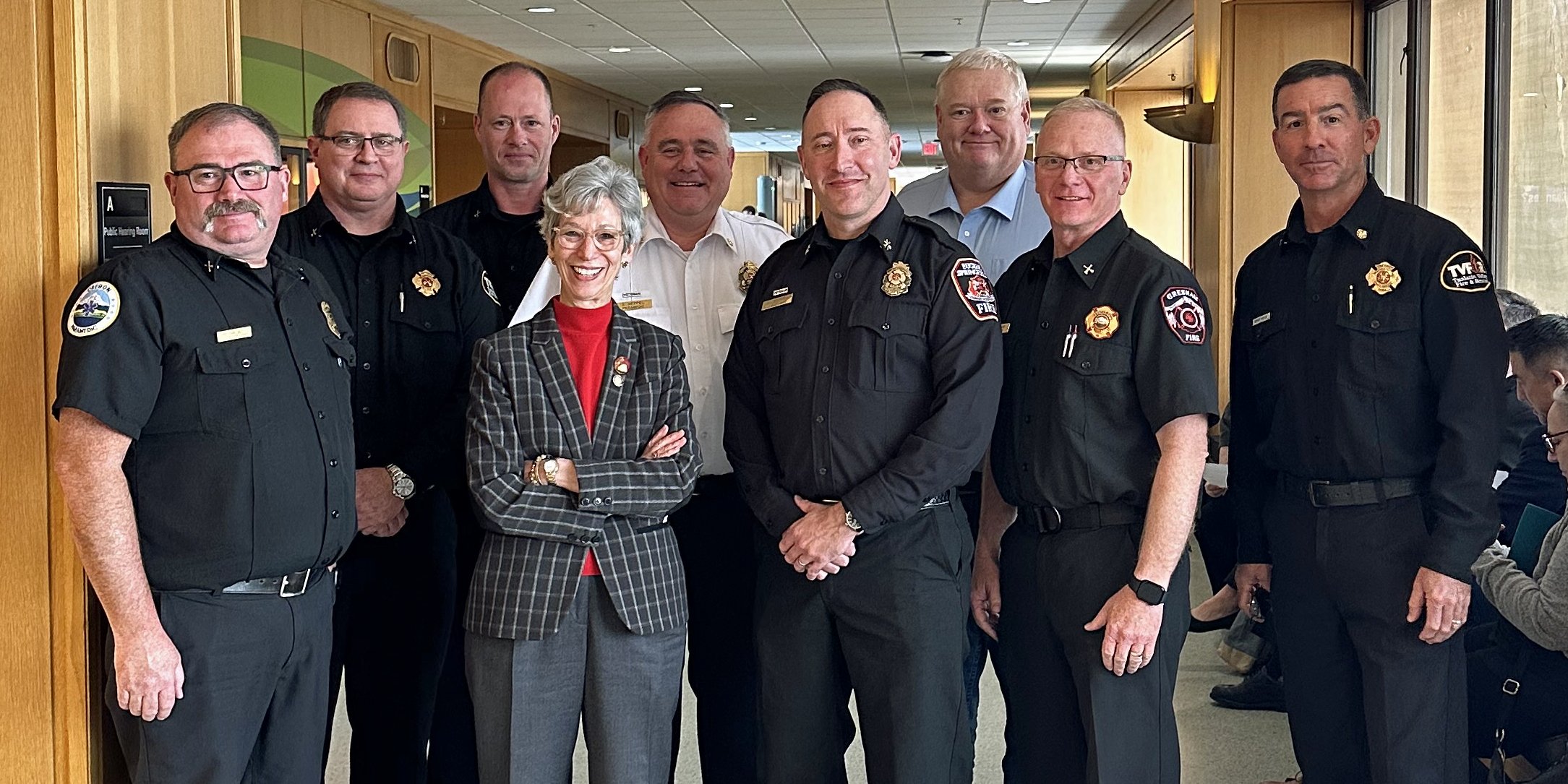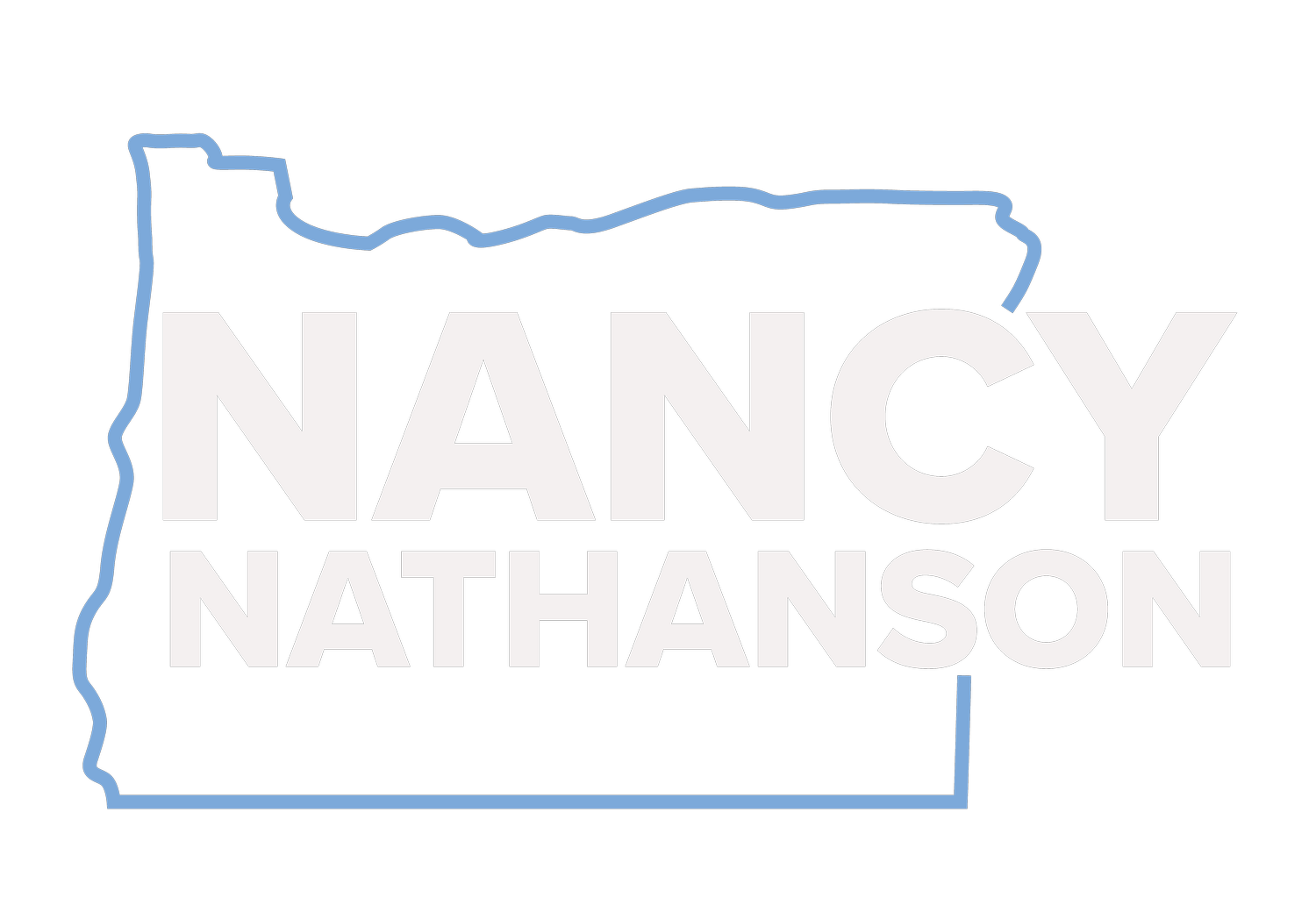
Priorities
Access to affordable prescription drugs and urgent health care
Protecting pharmacies and consumers
Pharmacies are struggling to stay in business (35 more closed in 2023) and a main source of strain is from Pharmacy Benefit Managers (PBMs) who impose harsh rules and reimburse pharmacies less than the cost of the drug to fill the patient’s prescription. PBMs are the little known "middlemen" or go-between businesses that call the shots for prescription drugs, influencing prices and choices. Those PBMs will see some significant new regulation in Oregon. My PBM bill (HB 4149) requires licensing, imposes stricter regulations, and sheds light on their money stream.
Reshaping same-day health care
Immediately following announcement of the closure of Eugene’s hospital I ramped up into high gear to ferret out what the closure would mean, and what we could do to mitigate the problem. When you find that the only ED in Eugene will close in 90 days, it's a crisis. After an initial meeting with key stakeholders I quickly determined that the best course of action is to advocate to change the delivery of "urgent care" and not pour money into maintaining a system that isn't working well for people who need care, and costs more than it needs to. Working closely with local experts and colleagues I wrote and passed a bill that we believe will be groundbreaking legislation to bring better and more cost-effective immediate care to people. Our "access to care" bill includes one-time gap funding for Eugene, which has added an ambulance crew to help meet the demands of transporting all emergency patients to Springfield as the area adjusts from three to two E.D.s (Riverbend and McKenzie Willamette). Most exciting, though, is an Innovation Fund to help launch new approaches and pilot projects to add access to same-day care while decreasing long-term systems cost. Innovative ideas include a nurse call service linked to the 9-1-1 system, a Mobile Nurse Practitioner, a 24/7 nurse call line, alternative transportation to non-hospital ED locations, or flexible EMS community response units. The bill also helps get nurses working more quickly in Oregon by enabling provisional licensing for nurses with a license and in good standing in another state.
We need to continue working on re-shaping access to immediate health care to work on mid-range and long-term ideas including urgent care, funding models, and workforce.
OSPIRG students
Revenue and tax fairness
My primary assignment in the legislature the last couple of years has been to chair the House Revenue Committee. Before that I had a leadership role on the Joint Committee on Ways and Means, handling the state’s biennial budget of about $70 billion. I’ve been handling money issues from both sides – raising it (the revenue stream), and spending it (dividing up a limited resource to address the needs of a diverse state).
A recent focus has been on tax expenditures: Oregon has a 400-page book of tax expenditures, or tax breaks like credits, deductions, and exemptions for income and property tax. Tax breaks are like “spending” money because instead of the money coming in as revenue to fund programs, like education and human services, it goes to tax breaks. Many of these are familiar, including tax credits and deductions like mortgage interest and dependent children. There are hundreds of others for personal and business use. The legislature routinely reviews some tax credits, and has even discontinued a few to help balance the budget. There are lots of other tax breaks that could be reviewed routinely to ensure they are still meeting the public interest.
Housing and homelessness
The state legislature has passed a number of bills and budgets in the past two years to help build more affordable housing, support struggling families with temporary assistance, and protect renters from sudden and excessive rent increases. (For example, dozens of families were forced out when their rent was increased 150% to move them out.) I’ve helped St. Vincent de Paul, Square One Villages, and others seeking help with funding and financing solutions.
I will continue to press for creative, flexible, and new solutions, in some cases “back to the future” solutions like Tiny Homes and Single Room Occupancy housing, so that we have housing available for people in situations ranging from emergency and temporary to affordable rental and ownership.
That means also supporting organizations that help with budget counseling and planning, like DevNW (formerly NEDCO and Willamette Neighborhood Housing Services).
Non-profit community-built manufactured homes
Building an Oregon for the future
Climate change
Climate change demands that we do things differently. I will continue to support actions to reduce greenhouse gas emissions and reduce dependence on carbon-based energy. Besides the high profile topics you read about, I have taken a special interest and worked on promoting electric vehicles and alternative and smaller vehicles, public transportation and passenger rail (see my thoughts in the section on Transportation), and promoting offshore ocean energy, including OSU’s wave energy test center. To enable early detection of wildfires and to help firefighters plan and monitor their emergency response, I pushed for funding a state-of-the-art camera system that is now available for public access as well, enabling more “eyes on the forest.”
Education
I spent much of 2018-19 working on reversing 30+ years of disinvestment in K-12 public education, and took a leadership role to pass the Student Success Act through the legislature. Now it’s time to look at other big issues.
K-12: Education Service Districts (ESDs) are an integral part of our public education system. Oregon has nearly 200 different school districts, and twice as many ESD’s per capita as Washington. How can we re-think the “infrastructure” to maximize money going to the classroom and supporting kids? Are we spending more money on testing than we need to? I passed a bill to take a look at testing: what’s required, what’s necessary, and how many more on top of that taking time away from teachers and students.
Northwest Youth Corps
at a job site
Higher Education: The distinctions between high school, community college and university are blurring. Credits for coursework need to be transferable. Online education options are expanding. We need to be cautious about spending scarce resources on building new classrooms that could be empty much of the week. It’s important to provide quality career and technical education to students who want it to prepare for their future careers. It’s important to ensure we have public education options (like community colleges) for students to achieve certificates to open doors in chosen careers.
I also believe it’s critical to preserve a right-sized university system for students to pursue liberal arts education and advanced degrees. How community colleges and universities work together is already changing - and should - since the separate systems currently compete for funding and have varying sources of revenue from taxes, bonding authority, and private gifts.
Technology
Oregon schools, business, and public agencies are threatened by cyber-attacks, and each month several more are faced with paying ransom or losing data, customers, and critical services. I worked with Oregon universities and community colleges to create the Cybersecurity Center of Excellence to help prevent, mitigate, or recover from ransomware and cyber-attacks.
Transportation
I’ve worked on bills to help transition to and encourage alternative fuel transportation, especially hybrid and electric vehicles. Health is impacted by poor air quality and climate change, as are household and public budgets; increasing options for public and private transportation are key to attacking those problems.
Trains
Rail is still an integral part of the transportation system, and for moving freight it’s more energy-efficient than truck transportation. Every rail car keeps four trucks off the highway, and moving freight by rail instead of truck lowers greenhouse gas emissions by up to 75%. The U.S. system is not comparable to other nations since ours is built almost entirely on privately owned track. But surely there’s a way to do better public-private collaboration to optimize the use of rail. We should fix choke points around the metropolitan areas and the rail crossing over the Columbia River. Serious problems are posed by trains that are too long, aging infrastructure and signals, lack of adequately-sized sidings and at-grade crossings. We need more separated grade crossings to reduce hazards and prevent delays as trains roll through towns.
More, Faster, Better. Passenger train service in the Willamette Valley needs to be a realistic and popular alternative to traveling by car. We need more options (more trains in the schedule). Faster times. And reliable schedules. Passenger trains are often delayed. It’s happened to me, and I hear the same from constituents. The Cascades train is late 27% of the time, usually because of freight train interference. I’ve been pressing for state and federal action. See my testimony to Congress.
Public safety
We need an emergency response that matches the emergency. Safety is a primary responsibility of government, yet for many government agencies the model hasn’t changed much for decades. People want to feel safe, where they are or when traveling. And to know that if they call for help someone will come. Different circumstances demand different types of response. I continue to work on specific topics including interoperability of emergency responder radios (did you know some of them have to carry two or three different radios due to incompatible frequencies as they move through different city-county jurisdictions?), and the cost of maintaining more than the ideal number of 9-1-1 call center (Public Safety Answering Points, or PSAPs).
Uniformed law enforcement officers respond to situations of immediate danger to the public. Certified health care and human service providers can respond to mental health and other crises. We know it works; here at home, CAHOOTS responds to about 20% of emergency calls with a medic and crisis worker and less than 1% of those calls require assistance from police. Eugene has been doing this successfully for 30+ years; now the rest of the state (and the nation) is planning to get on board.







